Entry Database : PDB / ID : 1zgyTitle Structural and Biochemical Basis for Selective Repression of the Orphan Nuclear Receptor LRH-1 by SHP Nuclear receptor subfamily 0, group B, member 2 Peroxisome proliferator activated receptor gamma Keywords / Function / homology Function Domain/homology Component
/ / / / / / / / / / / / / / / / / / / / / / / / / / / / / / / / / / / / / / / / / / / / / / / / / / / / / / / / / / / / / / / / / / / / / / / / / / / / / / / / / / / / / / / / / / / / / / / / / / / / / / / / / / / / / / / / / / / / / / / / / / / / / / / / / / / / / / / / / / Biological species Homo sapiens (human)Rattus norvegicus (Norway rat)Method / / / Resolution : 1.8 Å Authors Li, Y. / Choi, M. / Suino, K. / Kovach, A. / Daugherty, J. / Kliewer, S.A. / Xu, H.E. Journal : Proc.Natl.Acad.Sci.Usa / Year : 2005Title : Structural and biochemical basis for selective repression of the orphan nuclear receptor liver receptor homolog 1 by small heterodimer partner.Authors : Li, Y. / Choi, M. / Suino, K. / Kovach, A. / Daugherty, J. / Kliewer, S.A. / Xu, H.E. History Deposition Apr 22, 2005 Deposition site / Processing site Revision 1.0 Jul 26, 2005 Provider / Type Revision 1.1 Apr 30, 2008 Group Revision 1.2 Jul 13, 2011 Group Revision 1.3 Oct 11, 2017 Group / Category / Item / _software.nameRevision 1.4 Aug 23, 2023 Group Data collection / Database references ... Data collection / Database references / Derived calculations / Refinement description Category chem_comp_atom / chem_comp_bond ... chem_comp_atom / chem_comp_bond / database_2 / pdbx_initial_refinement_model / struct_site Item _database_2.pdbx_DOI / _database_2.pdbx_database_accession ... _database_2.pdbx_DOI / _database_2.pdbx_database_accession / _struct_site.pdbx_auth_asym_id / _struct_site.pdbx_auth_comp_id / _struct_site.pdbx_auth_seq_id
Show all Show less
 Yorodumi
Yorodumi Open data
Open data Basic information
Basic information Components
Components Keywords
Keywords Function and homology information
Function and homology information Homo sapiens (human)
Homo sapiens (human)
 X-RAY DIFFRACTION /
X-RAY DIFFRACTION /  SYNCHROTRON /
SYNCHROTRON /  MOLECULAR REPLACEMENT / Resolution: 1.8 Å
MOLECULAR REPLACEMENT / Resolution: 1.8 Å  Authors
Authors Citation
Citation Journal: Proc.Natl.Acad.Sci.Usa / Year: 2005
Journal: Proc.Natl.Acad.Sci.Usa / Year: 2005 Structure visualization
Structure visualization Molmil
Molmil Jmol/JSmol
Jmol/JSmol Downloads & links
Downloads & links Download
Download 1zgy.cif.gz
1zgy.cif.gz PDBx/mmCIF format
PDBx/mmCIF format pdb1zgy.ent.gz
pdb1zgy.ent.gz PDB format
PDB format 1zgy.json.gz
1zgy.json.gz PDBx/mmJSON format
PDBx/mmJSON format Other downloads
Other downloads 1zgy_validation.pdf.gz
1zgy_validation.pdf.gz wwPDB validaton report
wwPDB validaton report 1zgy_full_validation.pdf.gz
1zgy_full_validation.pdf.gz 1zgy_validation.xml.gz
1zgy_validation.xml.gz 1zgy_validation.cif.gz
1zgy_validation.cif.gz https://data.pdbj.org/pub/pdb/validation_reports/zg/1zgy
https://data.pdbj.org/pub/pdb/validation_reports/zg/1zgy ftp://data.pdbj.org/pub/pdb/validation_reports/zg/1zgy
ftp://data.pdbj.org/pub/pdb/validation_reports/zg/1zgy

 Links
Links Assembly
Assembly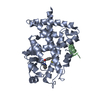
 Components
Components Homo sapiens (human) / References: UniProt: P37231
Homo sapiens (human) / References: UniProt: P37231
 X-RAY DIFFRACTION / Number of used crystals: 1
X-RAY DIFFRACTION / Number of used crystals: 1  Sample preparation
Sample preparation SYNCHROTRON / Site:
SYNCHROTRON / Site:  APS
APS  / Beamline: 32-ID / Wavelength: 0.99998 Å
/ Beamline: 32-ID / Wavelength: 0.99998 Å Processing
Processing MOLECULAR REPLACEMENT
MOLECULAR REPLACEMENT Movie
Movie Controller
Controller




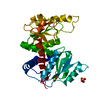
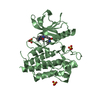
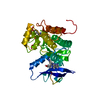
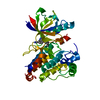
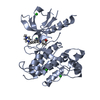
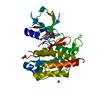
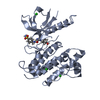
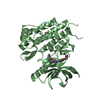
 PDBj
PDBj




